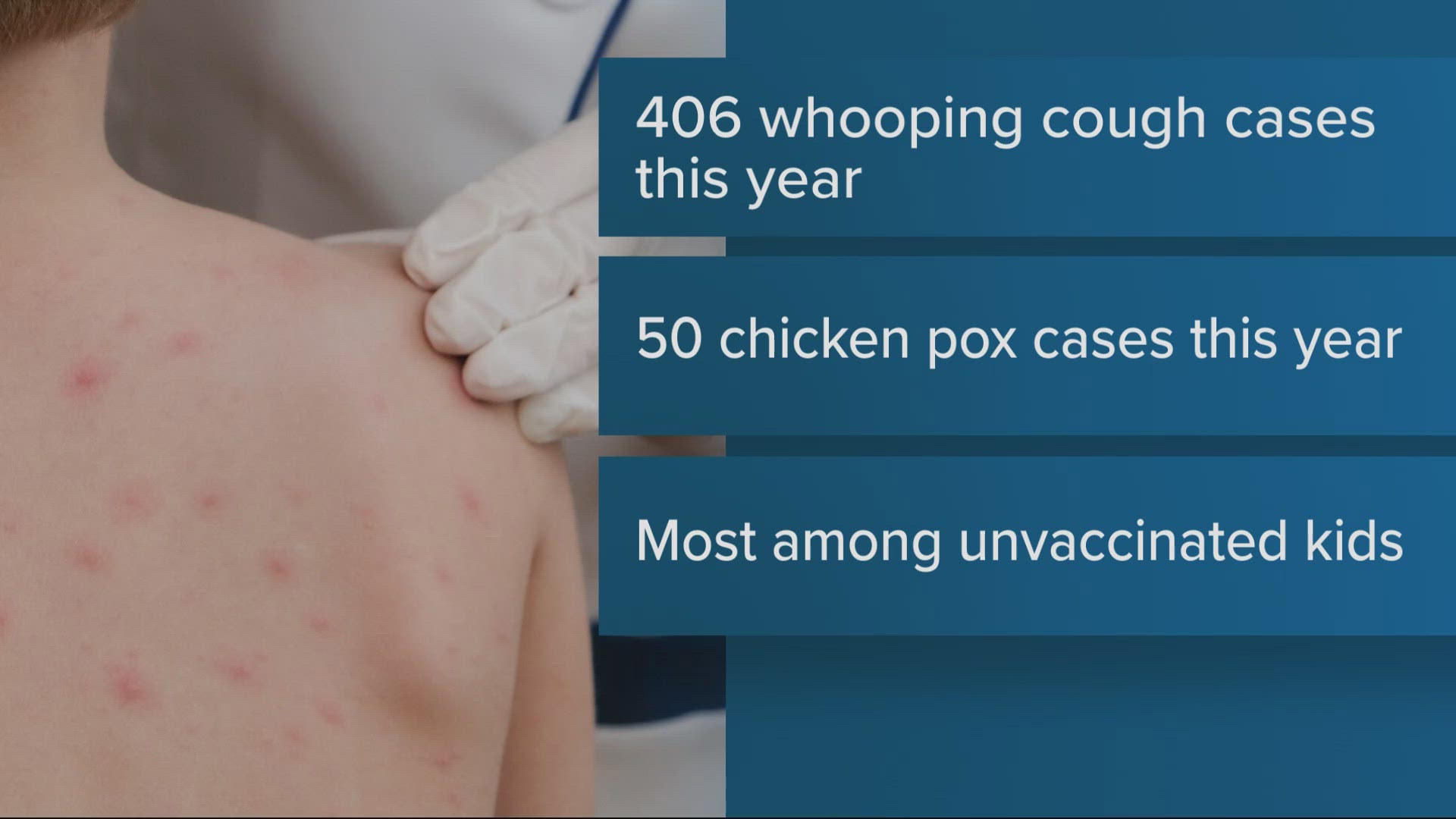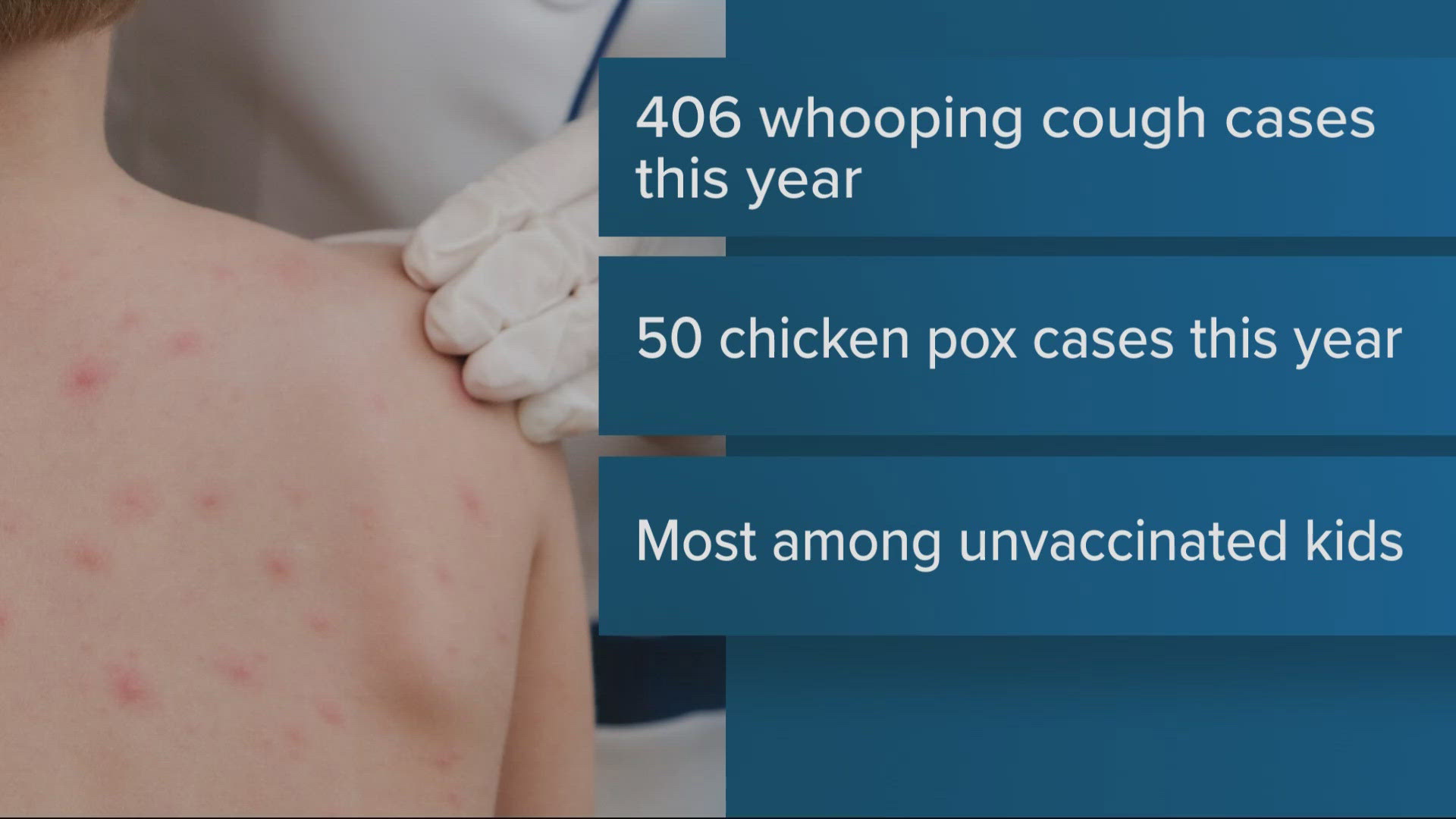Health
Whooping cough cases on the rise with measles
As measles cases continue to crop up across the U.S., so too are cases of another highly contagious disease.Whooping cough, known clinically as pertussis, has caused the death of at least five, according to a ProPublica report, and cases skyrocketed by 1,500% nationwide since a 2021 low point attributed to COVID-19 lockdowns and protocols. Centers for […]


As measles cases continue to crop up across the U.S., so too are cases of another highly contagious disease.Whooping cough, known clinically as pertussis, has caused the death of at least five, according to a ProPublica report, and cases skyrocketed by 1,500% nationwide since a 2021 low point attributed to COVID-19 lockdowns and protocols.
Centers for Disease Control (CDC) data found that more than six times as many cases were reported in 2024 compared to 2023, making the total number of 35,435 infections, including 10 deaths, higher than what was seen in 2019 before the pandemic.
Here’s what to know about whooping cough amid the growing cases.

Declining vaccine rates are contributing to rise of infectious diseases
The rise in pertussis infections has raised alarms for health experts who are already grappling with the ongoing outbreaks of measles nationwide. As of April 10, more than 700 cases of measles were confirmed across 24 states, resulting in at least three deaths. Texas accounts for 561 of those cases, with the epicenter of the outbreak, Gaines County in West Texas, claiming 364 infections.
attributed to declining MMR vaccination rates, which have resulted in a growing number of states losing herd immunity status. The vaccine-preventable disease was previously eradicated in the U.S. in 2000.
Vaccinations against whooping cough have also been on a steady decline, according to CDC data and the ProPublica report. The same vaccine hesitation that has fueled the measles outbreaks could also be contributing the resurgence of other infectious, vaccine-preventable and mitigated diseases that have previously been eliminated from or heavily controlled in the U.S.

What is whooping cough or pertussis?
Whooping cough, or pertussis, is a highly contagious bacterial infection that primarily affects the upper respiratory system, causing the intense coughing fits the disease is named after.
according to the CDC. It is most common in infants due to an underdeveloped immune system, inability to be vaccinated under the age of 2 months and exposure via friends, family and caretakers.
It is usually spread from person to person through respiratory droplets or contact with airborne droplets. Its signature “whoop” sound occurs as a result of infected people trying to catch their breath after or amidst a coughing fit.
according to the CDC. Symptoms vary based on the stage of infection, age of the person infected and vaccination status.
The incubation period for the disease is typically 5 to 10 days after exposure, though it can be up to 21 days. The typical whooping cough infection can take 12 weeks to resolve from the time of symptom onset, though total resolution of symptoms could take months.
DTaP vaccine (Diphtheria, Tetanus, Pertussis) is designed for children under the age of 7. DTaP vaccination is usually administered in five doses as part of a typical immunization routine. Doses are given at:
- 2 months
- 4 months
- 6 months
- 15–18 months
- 4–6 years
Can adults get whooping cough?
Adults can catch whooping cough, though symptoms tend to be milder than in children. The Tetanus, Diphtheria, Pertussis vaccine, known as Tdap, is designed to be given to adults, teens and children over the age of 7.
Protection given by the vaccine does lessen over time, meaning adults should regularly get booster shots.
- Adolescents should receive a single dose of Tdap, preferably at age 11 or 12 years. This applies even if they already had the above course of DTaP vaccines.
- Adults who have never received Tdap should get a dose. Adults who have had it should receive a booster every 10 years, or after 5 years in the case of a severe or dirty wound or burn.
- Pregnant women should get a dose of Tdap during every pregnancy, preferably during the early part of the third trimester, to help protect the newborn.
The CDC also emphasizes the importance of hygiene in limiting the spread of respiratory illness. Covering your mouth when you cough or sneeze, washing your hands often with soap and water and avoiding people who are showing symptoms are easy ways to help curb the number of cases.
Health
May is Mental Health Awareness Month
May is Mental Health Awareness Month – WTVQ 23 hours ago 0



Health
Why Personal Growth Drives Business Success
About Icebug Icebug is a Swedish footwear brand on a mission to empower people to get outside — regardless of the season. Founded in 2001, the company is best known for its innovative traction technologies, making it a go-to for runners, hikers, and outdoor lovers facing slippery or challenging terrain. As the first outdoor footwear […]


About Icebug
Icebug is a Swedish footwear brand on a mission to empower people to get outside — regardless of the season. Founded in 2001, the company is best known for its innovative traction technologies, making it a go-to for runners, hikers, and outdoor lovers facing slippery or challenging terrain. As the first outdoor footwear brand to become climate positive, Icebug leads with bold sustainability actions, transparency, and a commitment to doing business differently. Headquartered in Jonsered, just outside Gothenburg, Icebug combines nature-first values with cutting-edge design and a deep respect for the planet.
CEO David Ekelund believes this connection to nature is essential for both mental health and in-novative thinking. With mandatory “Wellness Hours” three times a week, all employees spend at least an hour outside — whether walking, running, or simply breathing fresh forest air. It’s part of a bigger shift: a commitment to inner development and new ways of working in a changing world. As Ekelund shares on a walk through the forests of Västra Götaland, breaking with business-as-usual has helped Icebug thrive — from the inside out.
It’s quite difficult to isolate where mental issues are coming from. Is it really because of work? Or can it be a parent who is ill or a child having problems at school? But it’s for sure, that you’re not one person at work and then you’re another person in your private life. We are basically one person.
The underlying assumption is, that people get more dusk worn down at work. They need the weekend or a vacation to rest. I think it’s not a really good way of having it. What if instead, we can make the workplace the place where actual health and well-being are increased? Where people can develop towards their full potential.

We know that physical activity also gives mental well-being, but that’s only one part of it. About 3 years ago, we decided that we wanted to work on inner development. This was really a departure from business as usual.
The core idea of business as usual being professional at work. But we all have strong sides and weak sides. And if we go to work, spending a lot of time trying to hide our weak side and always show our strong side, our “better side”, we lose a lot of opportunities to learn. Instead spending a lot of energy doing that, we could use it to develop together.



























































































